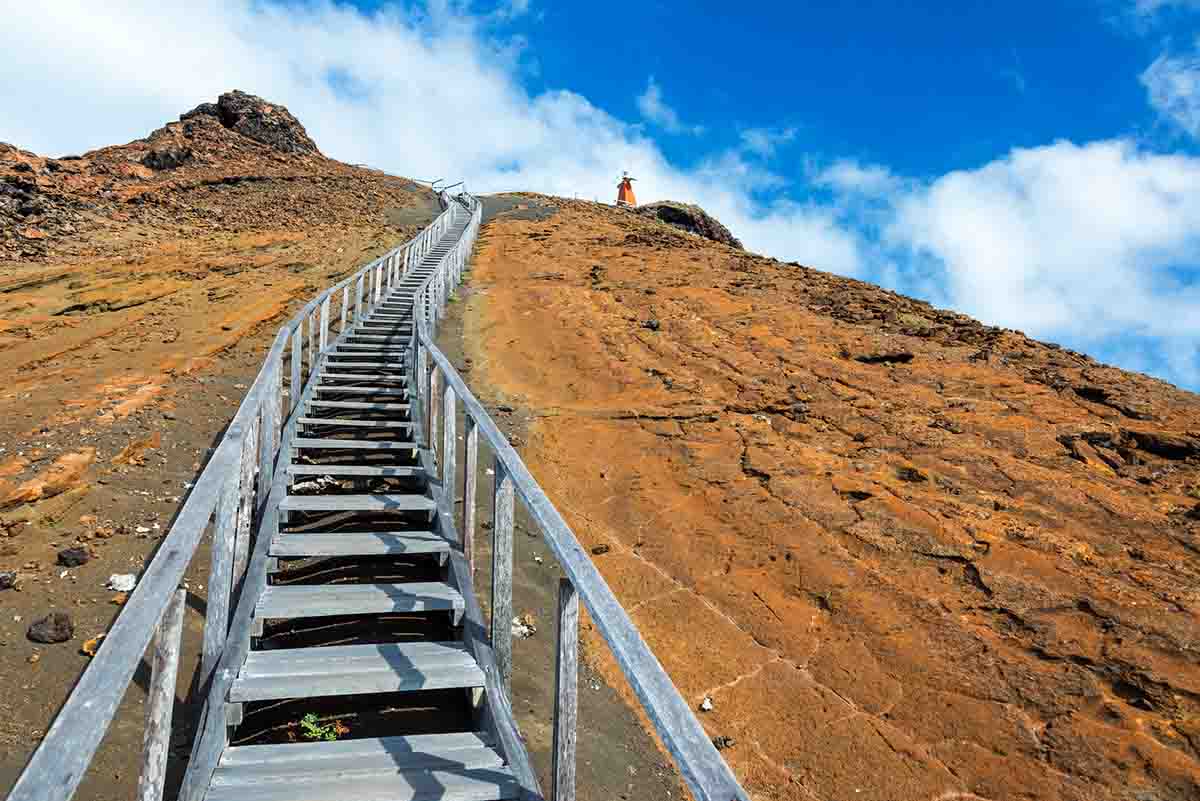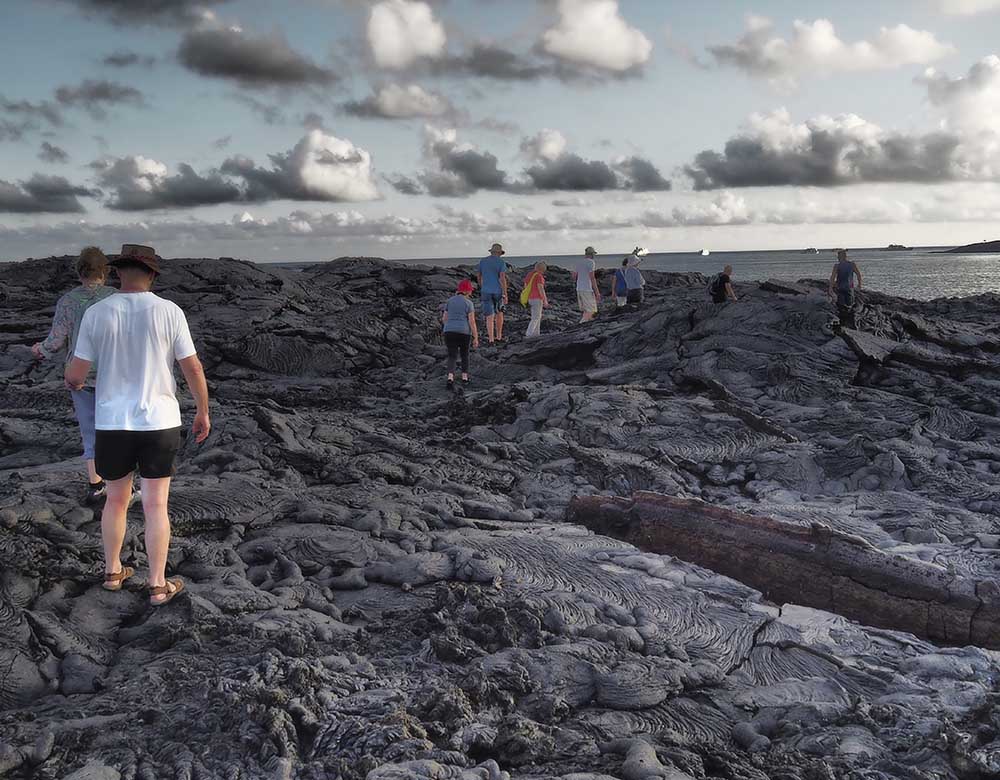Breakfast service. Wet landing. Visit Puerto Egas for a nature walk, salt mines, and fur seal grotto. Scuba diving.
Puerto Egas
The first step in a visit to Puerto Egas is to land on the dark sand beaches at James Bay. Walking along the rocky coastline offers the chance to see some of the best tide pools on Galapagos Island. You can see slugs, snails, hermits crabs, barnacles, fish, and even the rare four-eyed blenny. You will also find a variety shore birds, sea lions, marine iguanas and sally lightfoot crabs on the walk.
Two interesting excursions can be made from Puerto Egas. The first takes you to the location of one of the first entrepreneurs in the Galapagos. It is just a short walk away from the landing area. Salt was mined from the local salt crater for decades. In 1950, the industry was shut down leaving behind many rusted parts and old machines. From the crater cone, the trail follows the same path as wagon trains. Although the trail is not difficult, it can be one of the most intense hikes on the island. The trail is lined by arid vegetation that is cut by feral goats. The goats eat every leaf that is within their reach, leaving little for the endangered island animals. Bird lovers will delight in the chance to see a Darwin's finch or the endemic Galapagos Hawk, as well as the colorful vermillion flycatcher.
The view from the crater's rim is breathtaking. This extinct volcano, whose floor is now below sea level, can be seen from the crater's rim. The crater is flooded with salt water, creating a small lake. Many have failed to extract the salt from the sun.
The older orange lava fields that support vegetation, including Palo Santo trees, can be seen looking away from the crater.
The fur seal grotto is the next stop on the second excursion. It starts just beyond the tide pools. The lava-rocked pools are home to fur seals and sea lions. Visitors may have the chance to swim and see fur seals here.
Fur seals were once nearly extinct due to their fur coats. The Galapagos Fur Seal, which is the smallest fur seal in the southern hemisphere now ranks alongside the sea lions, is smaller than the others. They hide in caves or shelves built from rocky lava rock cliffs during the day to protect themselves from the scorching equatorial sunlight. They eat squid, fish and avoid sharks at night.
This is a beautiful place to snorkel and swim in the clear waters.
Espumilla Beach
Most people who visit Espumilla Beach now do so to see birds, not water. You can walk just a few steps inland through mangrove forests that are home to the common stilt. These mangroves are also home to sea turtles who nest in them. There is also a brackish lagoon that houses pink flamingos as well as white-cheeked pintails. You will follow the trail for a loop, passing a small knob and then returning to the beach. If you are observant, you may see a variety Darwin finches and vermilion fly catchers along the trail. If time permits, visitors can swim or snorkel at the beach.
Buccaneer Cove
Lunch service. Panga boat ride to Buccaneer's Cove. Deep-water snorkeling.
Buccaneers Cove was located less than an hour from Puerto Egas and served as a safe haven to pirates, sailors, and whalers in the 18th and 19th centuries. They were able make repairs to their ships by anchoring in the bay, while others went ashore to get fresh water, salt, and firewood. Ceramic jars, once considered the cargo of a mariner many years ago, were discovered at the bottom the bay. The jars contained wine and marmalade.
Today, there are very few boats that stop at Buccaneers Cove. Many boats cruise by at a slower speed, allowing visitors to see the steep cliffs of tuff formations as well as the reddish-purple sand beaches. The dramatic scenery is enhanced by hundreds of seabirds perched on top of the cliffs. The "monk rock" and the "elephant rocks are two of the most well-known rock formations. Buccaneers Cove is home to a large number of feral goats. To protect native vegetation from being destroyed by this introduced species, the National Park Service has temporarily fenced off a portion of the area. Just north of the valuable fresh water supply, which once attracted whalers and pirates, is a wet landing.
Guide briefing. Navigation to Daphne and dinner service


